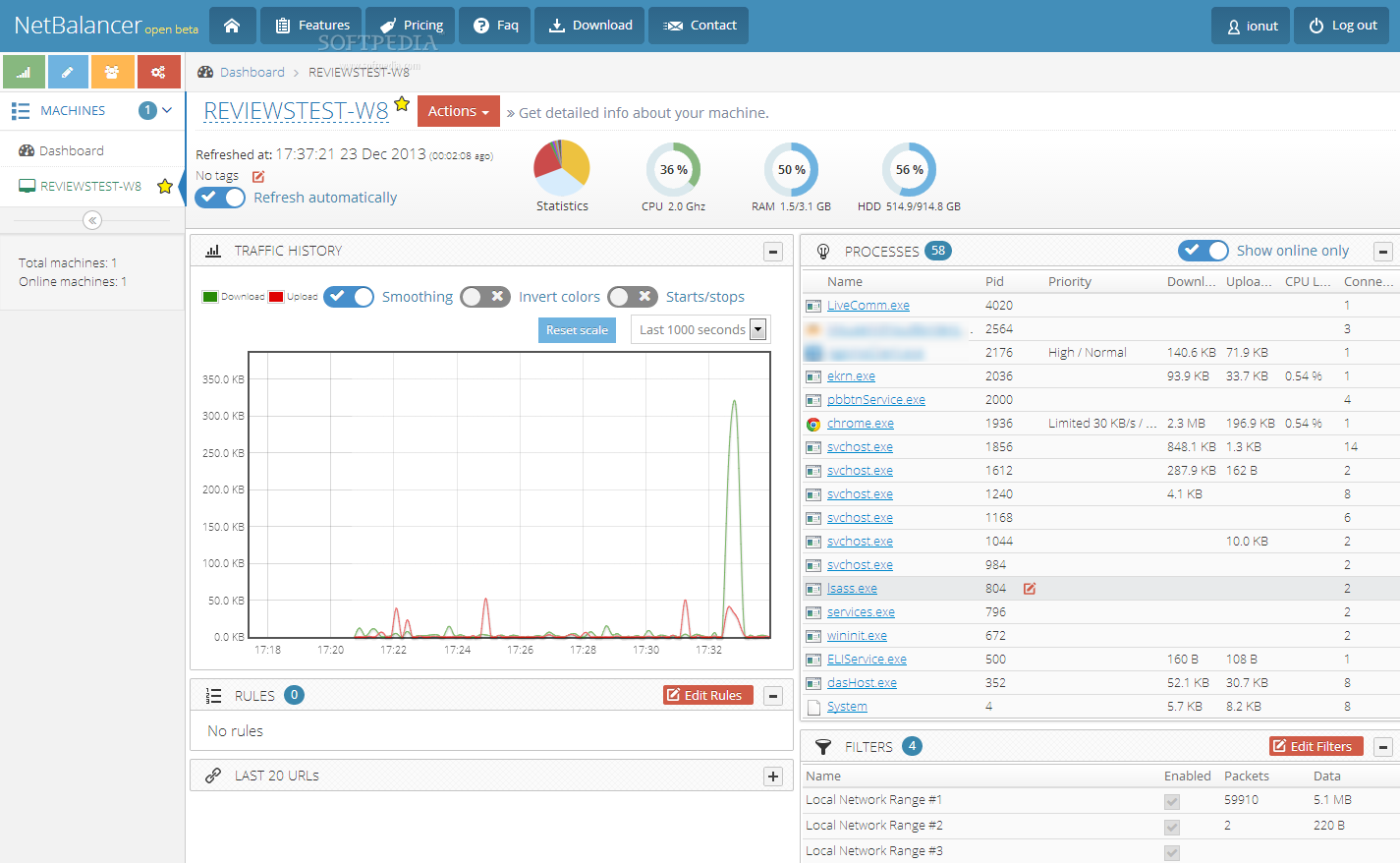


Deploying the app can result in improved security and traffic management. The application allows load balancing and microservices management on cloud web and app platforms. Nginx is a one-window solution for network resource management.
UBUNTU NETBALANCER FOR FREE
You can test Nginx for free for up to 30 days to evaluate its features. The enterprise pricing for the application-based enterprise units is based on VMs, cases, staging, containers, and the number of instances. The price of a single instance starts from $2500 per year. The per-instance pricing is based on individual instances on a cloud marketplace. Price: Nginx is available in annual or hourly subscriptions with different price packages. Direct Server Return (DSR) configurationsīest for: Load balancing, content caching, web server, API gateways, and microservices management for modern cloud web and mobile applications.Load balancing for cloud-based environments End-to-end timing for real-time telemetriesįast and reliable load balancing for TCP/HTTP-based applications on Linux platformsīasic app load balancing across cloud and container environments.App analytics integration – Grafana, Cisco Tetration Platform, AppDynamics, and Splunk.Load balancing for multi-cloud and on-premise environments Gzipping – Compress responses to optimize network cycles.This results in an efficient network resource delivery. The algorithm ensures that the requests from users are sent to the same server that contains data from the previous sessions. Hash-based Algorithm assigns a hash key to the client and server IP addresses.

The algorithm sends requests to the least busy servers.

There are different types of load balancing algorithms that are briefly discussed below: Q #5) What are load balancing algorithms?Īnswer: Load balancing algorithms determine how traffic is sent across different servers. A cloud service provider manages the LBaaS and is responsible for installing, upgrading, and configuring the application.
UBUNTU NETBALANCER SOFTWARE
Q #4) What are the different types of load balancing apps?Īnswer: Software load balancing apps can be installed onto a server or used as a load balancer as a service (LBaaS). It is traditionally paired with a Hardware Load Balancing Device (HLDs) to distribute traffic among servers, thereby resulting in an efficient and reliable network with maximum uptimes.įurther reading => What is a load balancer and how does it work Load balancing is performed on a virtual machine or a standard server. The application allows you to manage multiple servers that have the same configuration for the efficient distribution of network resources.Īnswer: Load balancers are Application Delivery Controllers (ADCs) that drive modern web applications. Q #2) Why is it important to apply load balancing to the cloud?Īnswer: Load balancing is important to deploy for your cloud environment to ensure efficient traffic management. Additionally, the app serves as a reverse proxy, retrieving resources from servers and returning them to clients, appearing as if they had originated from a proxy server. This app receives traffic from different sources and distributes traffic across data servers. Q #1) What is a load balancing application?Īnswer: Load balancing software facilitates the efficient distribution of network traffic. Comparison Of Best Load Balancing Software.


 0 kommentar(er)
0 kommentar(er)
